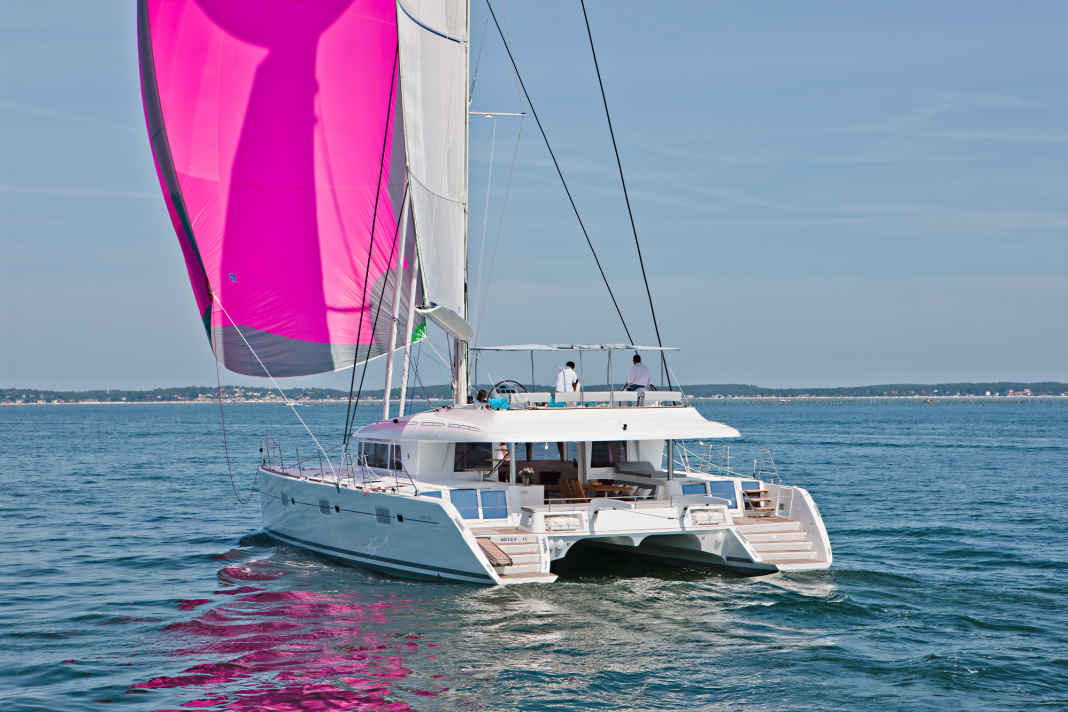




Refit hype in the yacht business
This makes Lagoon the first large-scale manufacturer in the industry to take such a step. Brands from other sectors, such as the luxury watch manufacturer Rolex or the Porsche company, already offer their customers such a restoration option for old pieces of jewellery.
It's different in the yacht business. This is probably where Nautor comes closest to the refit model. Since the purchase of Camper & Nicholson in the early 2000s, the Finns have been offering qualified service work in addition to new yachts. In the meantime, operations in the Mediterranean region are also part of the business sector, which is set to grow further. Unlike Lagoon, however, Nautor has not yet established the refit model as a separate division.
One of the reasons for the Lagoon programme, which runs under the name "Neo", is also the self-imposed sustainability goals. According to this, the entire Beneteau Group wants to reduce the company's CO2 emissions by 30 per cent by 2030. The refits are one component of this strategy.
More about Lagoon:
Lagoon launches 62-foot models
The programme will initially benefit owners of the Lagoon 620, who will be the first to have their catamarans refitted. Once the refit is complete, the boats will then become part of the new Neo line.
For the time being, the shipyard is concentrating on the Lagoon 620, as it offers more space than smaller catamarans with a length of almost 19 metres and a width of ten metres and can therefore be more easily adapted to today's standards. However, other models are to be added successively.
Lagoon offers three refit packages
What is actually changed or overhauled during the refit depends on the package that the catamaran owner books. There are three options to choose from: With the standard package, the hull structure is checked. The electrical system is brought up to date, software is updated and the interior is refreshed.
In the second package, the so-called "Silent Pack", the old batteries are also replaced with longer-lasting and more efficient lithium batteries and solar panels are installed. An option that is one of the most popular extras for sailing yachts of this size these days. On sunny days, there will be no need for recharging via the ship's diesel or generator.
With the so-called Premium Pack, the third package, a new hull paint job can be booked. This offer is primarily aimed at old charter catamarans whose gelcoat is often chalked or damaged.
Lagoon currently expects the refit to take between four and six months, depending on the package. A specialised production facility has been set up on the Mediterranean in Monfalcone, Italy, for this purpose. Compared to the production facility on the French Atlantic coast, the shipyard capacities there can be customised and are less geared towards series production.
More about catamarans:
Two-year manufacturer's warranty
However, before the catamaran is returned to the owner after the refit or sold to new owners, it undergoes a thorough inspection. According to the company, inspection procedures that are also used for new builds will be applied. This means that the ships not only leave the halls in new splendour. They also receive a two-year manufacturer's warranty.
The first model to be completely refurbished as part of the programme is a Lagoon from 2012. The "Firefly" was privately owned for several years and was last used for chartering. She is considered the pioneer ship of the Neo line. At the trade fair in Cannes, which begins next Tuesday, 10 September, she will be presented to the public for the first time, as will the entire restoration initiative.

